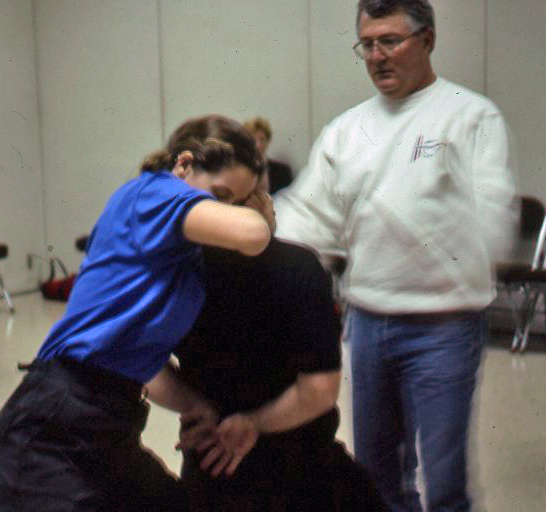On June 22, 2025, at a church in Wayne, Michigan, there was apparently an armed person acting like he was intending to shoot up the church service. According to our service Shooting News Weekly, “Courageous church safety team members engaged a man wearing a tactical vest and toting a long gun before he could enter the building … When the shooter opened fire, one team member ran him down with his F-150 truck giving other members of the team time to shoot him dead. That’s thinking outside the box.”

Actually, that’s square inside the box. As a great law professor was heard to say in 1980, “Don’t think great thoughts; read the statute.”
He’s right. Deadly force is, well, deadly force. Whether it’s delivered from the barrel of a firearm, a ball bat, the front bumper of an automobile – the examples are legion – deadly is deadly.
Look at a single statute, an example, about the use of deadly force:
A person is justified in the use of deadly force under circumstances described … if such person reasonably believes that such use of deadly force is necessary to prevent imminent death or great bodily harm to such person or a third person.
“Great bodily harm” is undefined. Traditionally it goes to crippling injury (though this state includes “disfiguring” injury in the aggravated battery statute).
The statute goes on, with regards to vehicles:
A person is justified in the use of deadly force to prevent or terminate unlawful entry into or attack upon any … occupied vehicle if such person reasonably believes that such use of deadly force is necessary to prevent imminent death or great bodily harm to such person or another.

The local police chief noted, in the linked story above, “… a parishioner struck the gunman with their vehicle (sic) as the gunman shot at the vehicle. At least two staff members shot the gunman, killing him.”
Some personal history with this debate can illuminate the issue. In the early part of my career, a report was received that a police officer in the performance of duty was being engaged by an armed offender. The officer, still in the marked patrol car, elected not to stop and dismount, but run over the violent offender. There was some locker room debate over that one, when the term, “Impalo-Car-Fu” was invoked during a proposal that an in-service training block – “Use of the Patrol Vehicle as an Impact Weapon” was offered.
We never got the class.
Fast forward almost 20 years and I was in a “Constitutional Limits on Use of Force” class conducted by the director of our state law enforcement academy. The class was attended by the “command staff” (silly term, that) of our agency. One of the slick-sleeves asked about the use of the sap – a lead-weighted leather device designed to reduce resistance to lawful apprehensions.
The director responded that its use, in accordance with the Constitutional standard and the state law, was indistinguishable from any other tool of arrest.
One of the brass responded, “how do they qualify with it?”
“If you get the suspect in custody,” the director replied, “I’d say you made it.”

The question of flashlights – and running over armed violent offenders with cars – was dismissed by another “academic” member of staff as “non-conforming use.”
If someone’s trying to murder you – right now – and you strike him in the head with the big metal flashlight of the day, it’s illuminating; that’s absolutely what a flashlight is for.
He’ll “see the light.”
It’s not that a flashlight isn’t a tool of force, any more than a sharpened screwdriver isn’t a “weapon” when in the hands of a criminal committing an armed robbery.
It’s why and how the force is applied. If it’s a non-deadly force situation, striking someone in the head carries too great a risk for death or great bodily harm.
In the present case, the violent offender shot at a parishioner with a rifle. The victim was in an operable vehicle. Dismounting to engage would imply that imminence was not in play.
It was. Hence the “Ford F-150” remediation.
Comply with the law. To do that, understanding it is handy.
— Rich Grassi